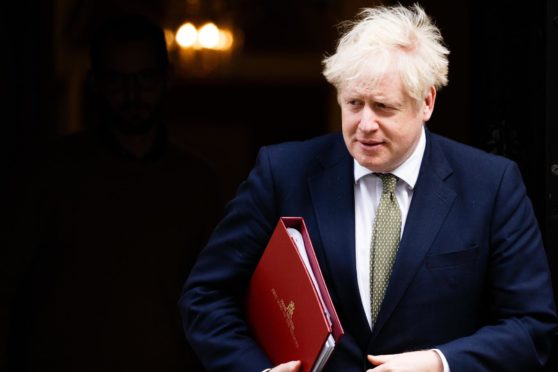When Douglas Ross made a speech to the Policy Exchange, he did not mince his words.
After Boris Johnson announced a one-month extension to furlough as he put England back into lockdown for a month, Mr Ross was calling for flexibility from the Treasury.
With the money coming to an end on December 2 south of the border, Mr Ross was seeking a guarantee that cash would be available in Scotland beyond that date – should a lockdown be required north of the border later on.
Mr Ross found himself in an unusual position for a Tory leader. He was backing Nicola Sturgeon’s SNP administration’s call for money from his own Conservative colleagues in the UK Government.
Having made such a public plea for the cash, it was widely assumed by observers that Mr Ross’s demand would be met by Mr Johnson. Doing so, after all, would give Mr Ross an important victory. It might even help Mr Johnson’s reputation north of the border – something the prime minister desperately needs.
My statement on the extension of furlough in the event of another Scottish lockdown. 👇 pic.twitter.com/ylZqkSjqOt
— Douglas Ross MP (@Douglas4Moray) November 2, 2020
The drama continues…
But somehow the delivery of what would seem to be a relatively simple thing to choreograph risked undermining those objectives.
After Mr Ross had made his speech, Ms Sturgeon took her daily coronavirus briefing in Edinburgh. At this stage there was still no sign from the Treasury whether Mr Ross’s demand would be met.
That led to Ms Sturgeon to call for certainty from the UK Government. She also warned that she may have to tighten restrictions earlier than she would like to in order to take advantage of the furlough scheme if it was going to end on December 2 in Scotland.
The drama continued when Mr Johnson addressed the House of Commons that afternoon as MPs debated the English lockdown.
Time and again to questions from SNP MPs and the Lib Dem Alistair Carmichael, Mr Johnson failed to give an unambiguous answer on the question of whether Scotland would be able to access furlough cash if the country goes into lockdown after December 2.
It was only when Mr Ross made his own contribution to the debate that Mr Johnson gave the Scottish Conservative leader what he wanted.
This is a very welcome commitment and the guarantee that @ScotTories have been calling for that Scottish jobs will continue to be protected by the UK Government furlough scheme if the evidence shows we need a second lockdown. https://t.co/LiQoDOubkR
— Douglas Ross MP (@Douglas4Moray) November 2, 2020
“The furlough scheme is a UK-wide scheme. If other parts of the UK decide to go into measures which require the furlough scheme then of course it’s available to them, that has to be right. And that applies not just now, but, of course, in the future as well,” Mr Johnson said.
This was presumably to give Mr Ross his moment in the sun and, indeed, the announcement was welcomed by the Scottish Conservative leader (and Ms Sturgeon).
But by that time the headlines were characterising Mr Johnson’s commitment as a “U-turn”.
